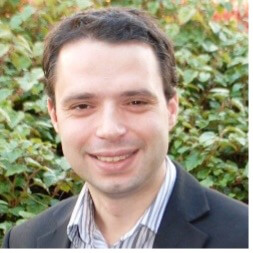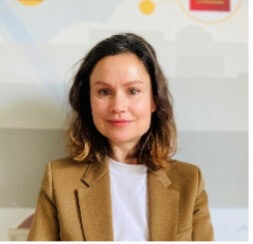Planning the Future Energy and Water Networks - A Vision for the Maltese Islands
Written by Somesh Bhattacharya, Brian Azzopardi, and Renata Sadula
Malta’s first multiutility smart metering grid appeared about a decade ago. Since then, the Maltese nation has been continuously providing support in funding and schemes for energy and water-related projects such as the widespread encouragement of photovoltaics, rainwater catchment tunnels and water filtrations and quality-related projects. What is certain is that as a small geographic archipelago and its high population density, the Maltese environment offers world’s first opportunities for national testbeds.
The energy and water networks of Malta are intrinsically connected. However, not much has been harnessed from the potential viewpoint of smart metered multiutility in terms of water and energy storage both from time-demand pricing mechanisms as well as a part of further integration of new technologies in today energy transition such as photovoltaics or the opportunities that electric mobility will offer.
ENERGY AND WATER NEXUS IS THE KEY…
Given this energy transition, any electrical power network embraces reliability through a cost-effective approach for the large scale procurement of energy storage is required. The Maltese grid network is not an exception, and therefore energy-water nexus is a timely discussion to offer this potential.
There are two potential key factors on energy-water nexus in Malta. Firstly, there is a common acceptance level of discomfort in buildings due to the lack of heating. It is a well-known fact that heating is not deployed in most of the dwellings, and even though the Maltese winters do not last long, the discomfort inside the buildings looms because of the high levels of humidity and low air pressure, and as a consequence, the temperatures inside the homes are usually lesser than the outside ambient temperature.
Secondly, the main driver for energy-water nexus that has been well-known in the Maltese islands is the dependency on the desalination plants for the most part and groundwater for the sanitation and drinking needs of the population.
Both key factors are energy-intensive to reach the appropriate levels of demand and comfort. Furthermore, the electricity unit cost of end-users is one of the highest in the European Union, having no natural resources available on the island and with recently one interconnector cable to mainland Europe.
POSSIBLE SOLUTIONS
Solutions for these two energy-water nexus key factors exist both on an individual level and national level.
On the comfort level, heat pump technology with efficient thermal energy storage has proven itself to be an excellent choice for space heating and cooling. The coefficient of performance for heat pumps in the Maltese context stands at an average of 3.7 for a 6kW heat pump. One typical household would consume an average of 26,280 kWh/year. However, Malta is blessed with 300 days of sunshine. The total installed photovoltaic systems (PVs) reached 151kWp, out of which 51% is from residential sites. However, in Malta, due to network restrictions and supporting schemes influence single-phase households may easily install up to 3.3kWp of PVs. With the virtue of PV self-consumption for thermal energy storage (TES) during day-time, as the heat pumps draw lesser power for TES, the exposure to high electricity prices can be limited, as well as the voltage profile of the feeders can also kept in check, as higher levels of penetration in low voltage systems can raise the voltage profile of the network.
Furthermore, through the network systems of the desalination plant, water reservoirs and pumping systems across the country, a combined approach to utilise solar energy as a priority would offer an optimal energy-water flow network optimisation problem. The desalination plants (Reverse osmosis based) are energy intensive and it takes as much as 4.6kWh to produce 1m3 of water. If speaking from the Island’s perspective, the daily electricity consumption from the three desalination plants in Malta amounts to nearly 5% of the total loads. PVs facilitating self-consumption for the desalination plants help to shift the loads during the daytime pertaining to variable speed pumps, that aids in water storage. The freshwater production is increased during high insolation hours and this helps in reducing the energy costs for both the desalination plants, and the water distribution networks.
THE EDGEWISE PROJECT
In 2016 the Malta College of Arts, Science and Technology (MCAST) started to develop a variety of solutions to energy-water storage for self-consumption through building a pilot plant at Covilha, Portugal, and thus assisting MCAST in analysing the energy produced by PV system both in terms of energy storage and gravitational potential energy in water tanks. The works produced by the EDGEWISE project under the Maltese perspective include works done on Energy-Water nexus for comfort Maltese households with PV presence. The heat pumps were modeled as flexible loads incorporating PV self-consumption capability.
The €1M ERANETMED initiative of the Member States, Associated Countries and Mediterranean Partner Countries, supported in Malta by the Malta Council of Science and Technology (MCST) is EDGEWISE (www.edgewise.ubi.pt/index.php/en/ ) project led by the University of Beira Interior, Portugal together with eight partners from France, Tunis, Greece, Cyprus and Malta.
This article edited by Cesar Duarte
For a downloadable copy of the July 2021 eNewsletter which includes this article, please visit the IEEE Smart Grid Resource Center.



To have the Bulletin delivered monthly to your inbox, join the IEEE Smart Grid Community.
Past Issues
To view archived articles, and issues, which deliver rich insight into the forces shaping the future of the smart grid. Older Bulletins (formerly eNewsletter) can be found here. To download full issues, visit the publications section of the IEEE Smart Grid Resource Center.




